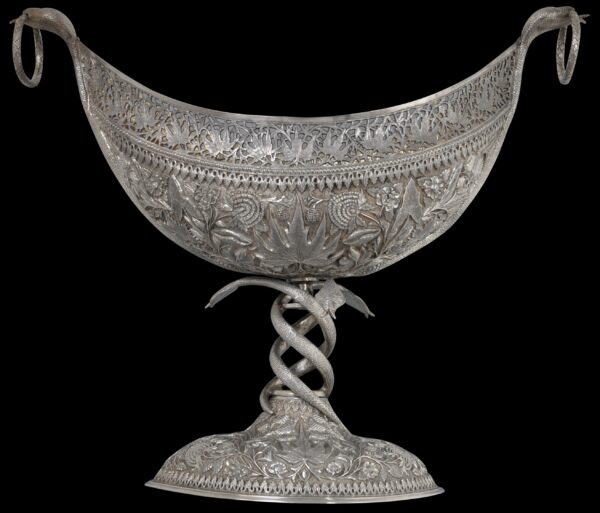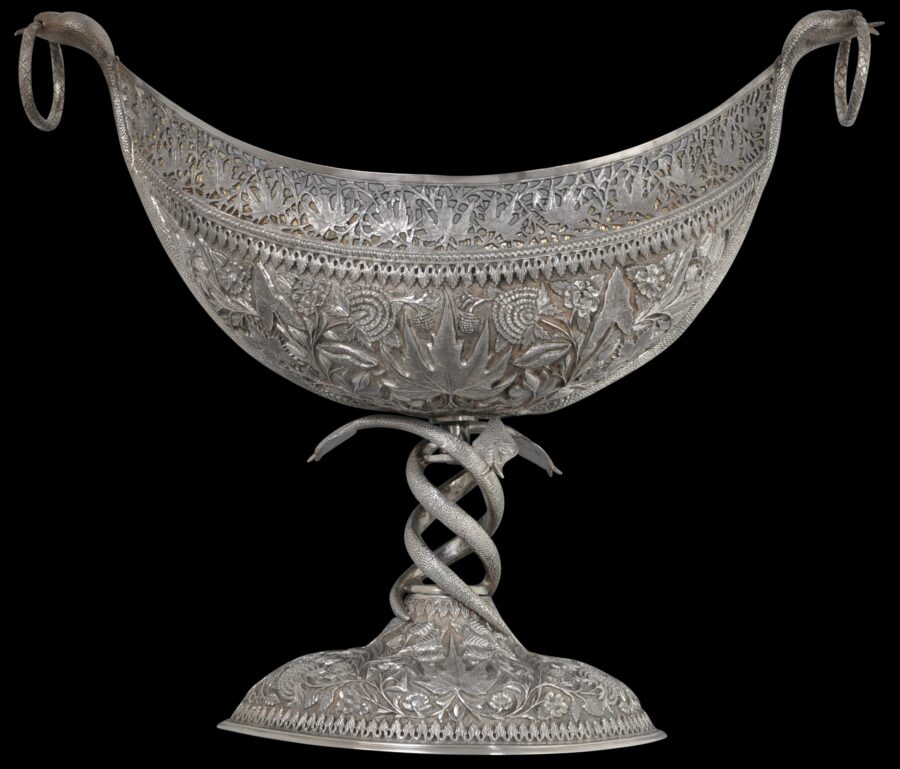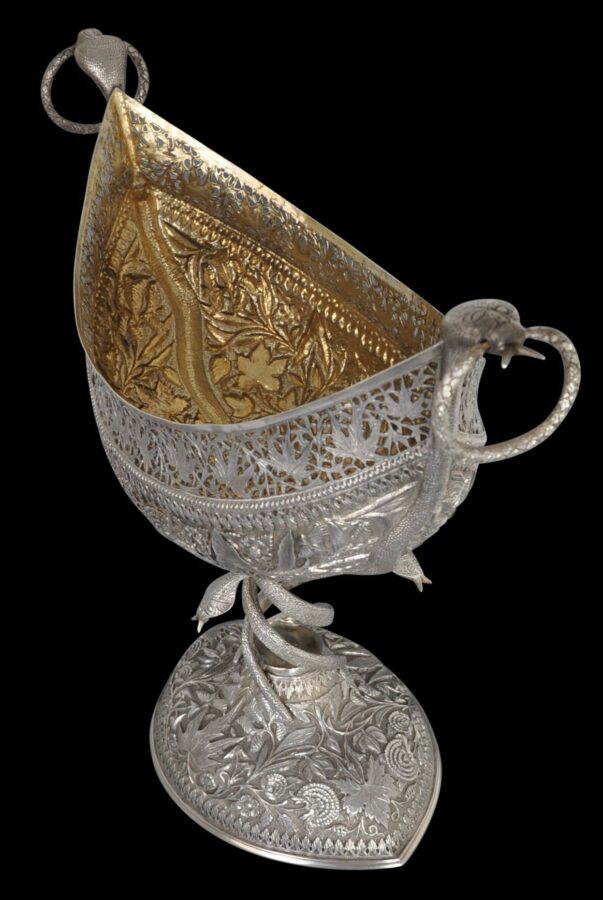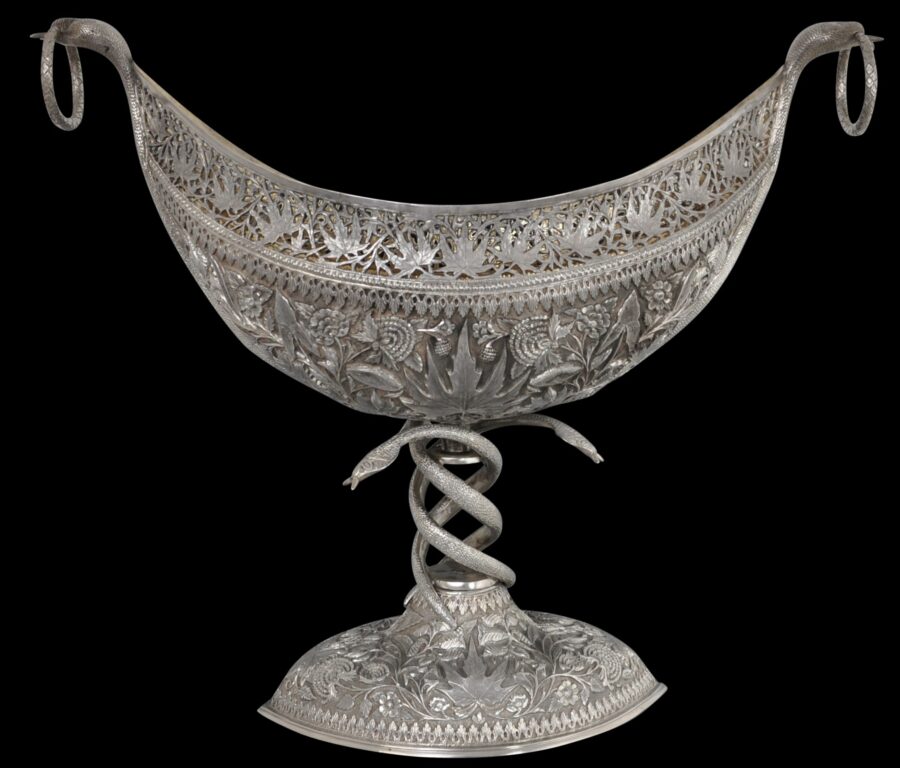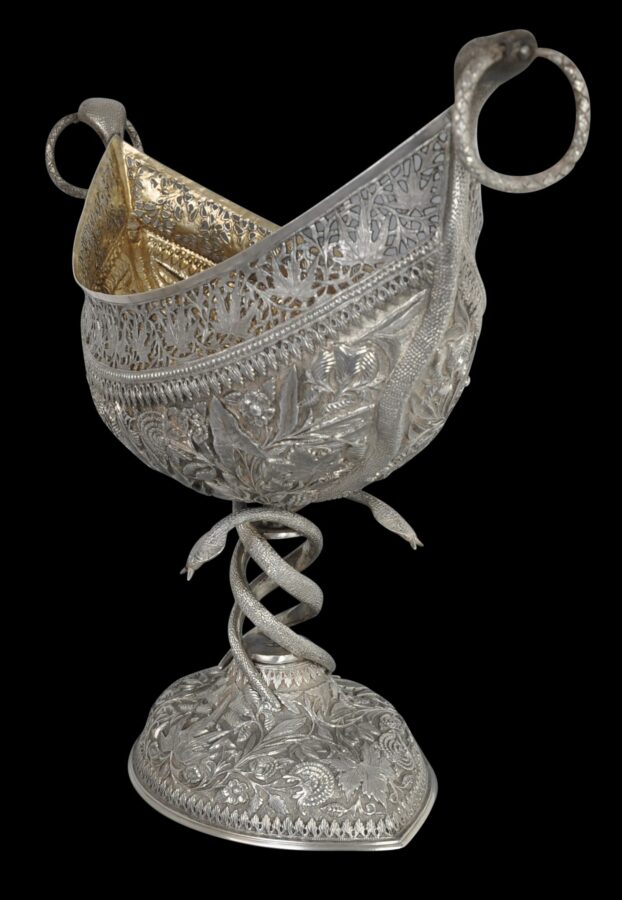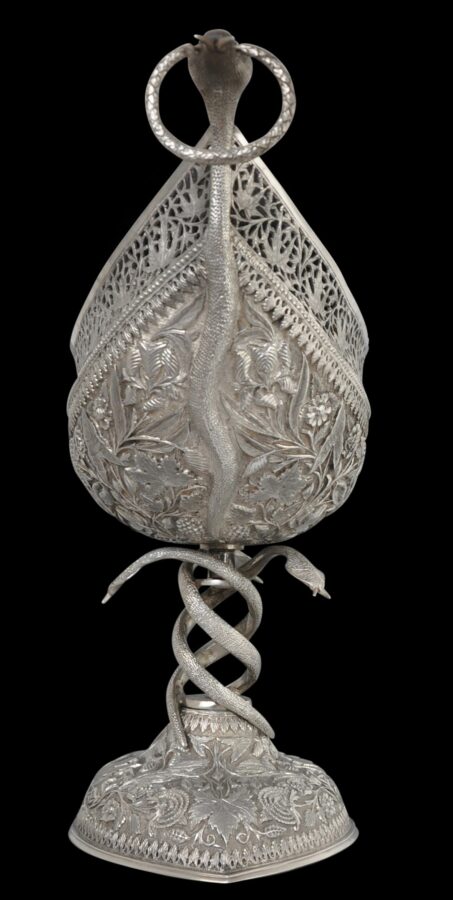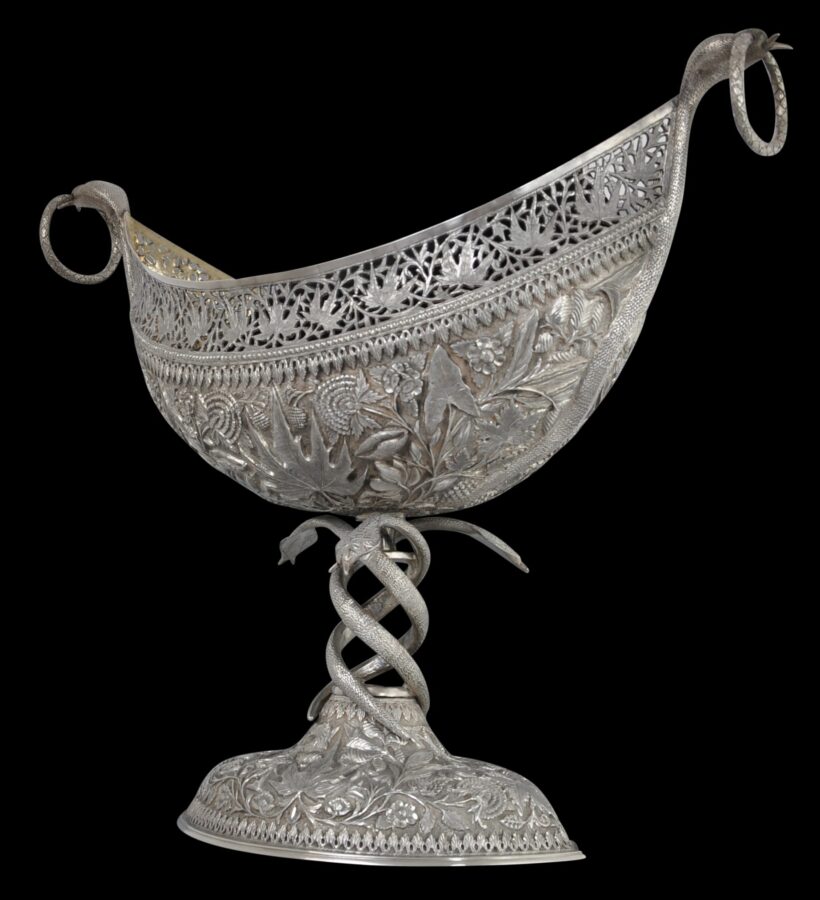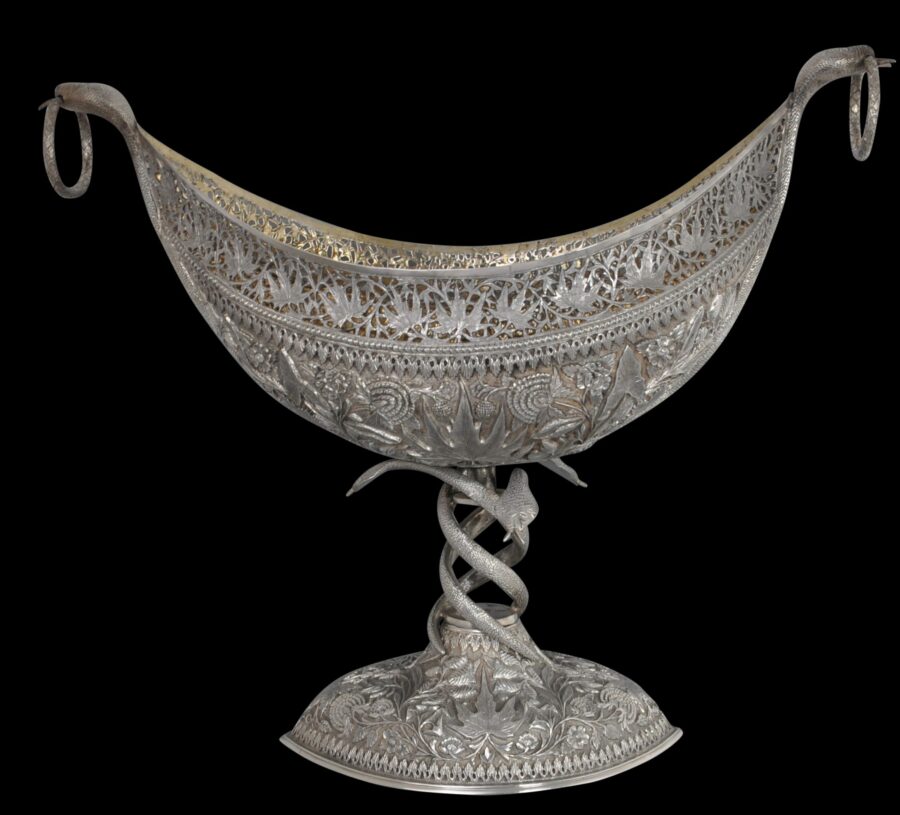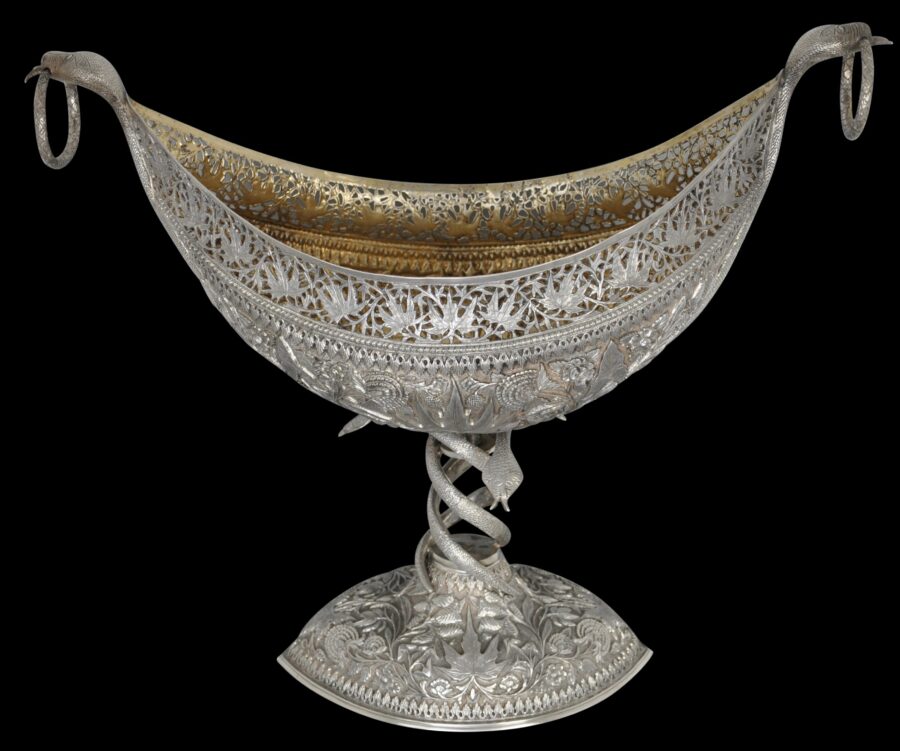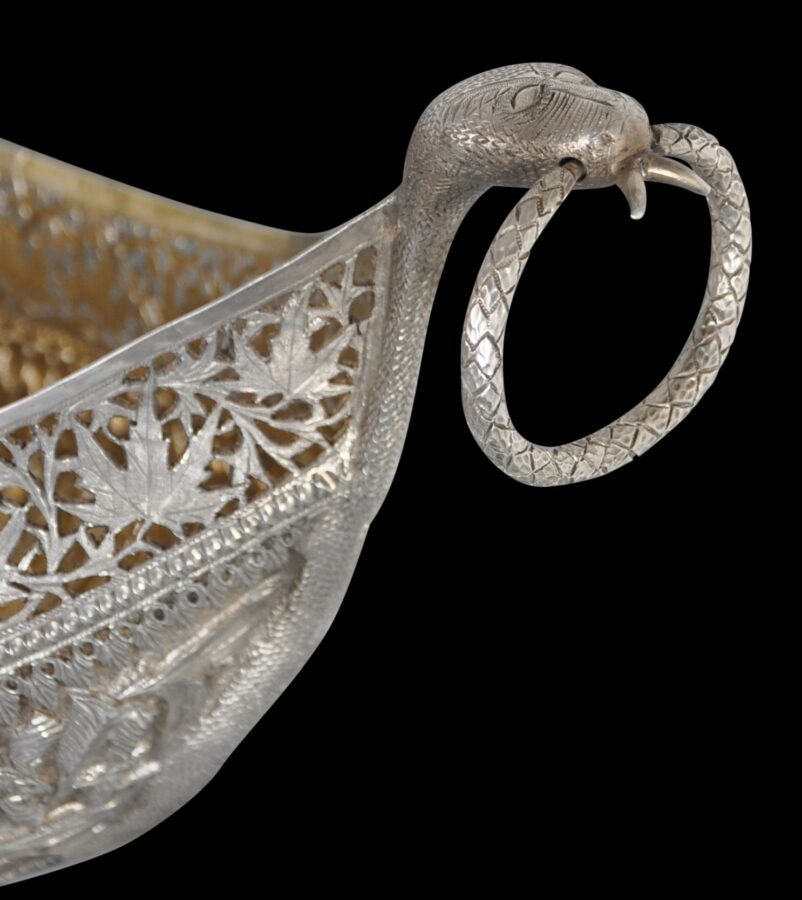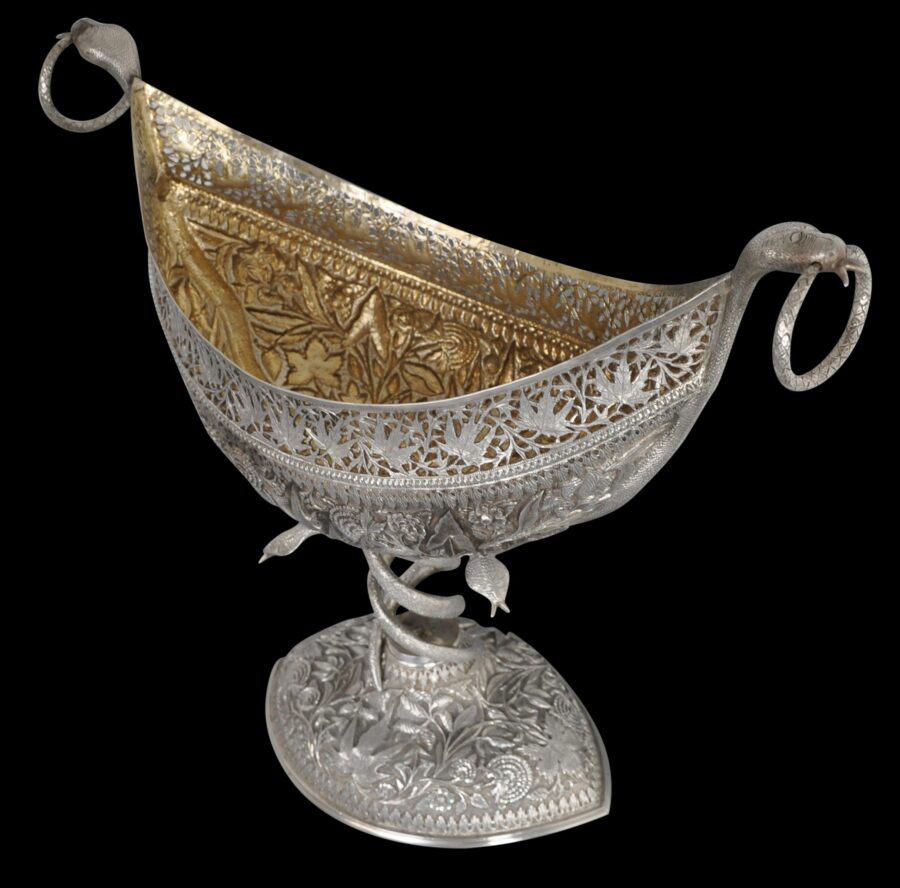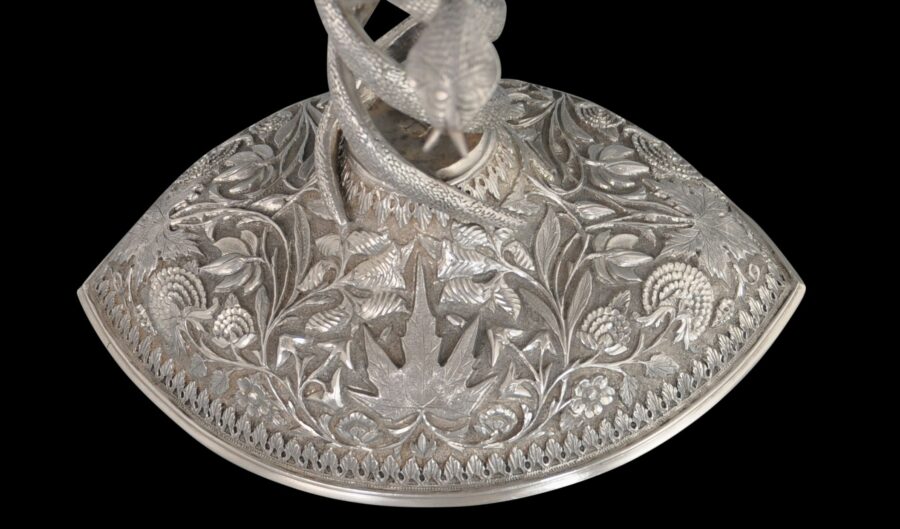This centrepiece bowl and stand ensemble is a spectacular example of colonial Kashmiri silverwork produced towards the end of the 19th century.
The bowl is in the form of a boat-shaped kashkul. Kashkuls were used by Islamic sufi mendicants or dervishes as begging bowls to accept alms that were offered to them. Wealthy aristocrats and merchants sought the company of sufis and dervishes and sometimes commissioned kashkuls which were presented to them. The bowl here has been produced for the colonial market and is based on such a vessel.
It has two cobra or naga head finials which are pierced like a kashkul so that the vessel could be hung from a chain. Silver rings hang from each of these ends. The bodies of the snakes trace out the end ribs of the bowl.
The bowl stands on a splayed foot, with a dramatic column of three writhing snakes whose bodies twist around each other, which separates the bowl and the foot.
It is chased in unusually high relief with chinar leaves (known in Europe as plane tree leaves – the chinar or plane tree is indigenous to Kashmir), the so-called Kashmiri ‘poppy’ pattern, as well as grape leaves and bunches of grapes – this last motif being an unusual one for Kashmiri colonial silver.
A pierced chinar leaf border runs around the upper section of the bowl.
An almost identical example in a private collection in Rome is illustrated in Wilkinson (1999, p. 111).
Watt (1903, plate no. 8) illustrates a related Kashmiri silver kashkul-shaped bowl that was for sale in the Delhi Exhibition, 1902-1903.
The bowl and stand have been executed in high-grade silver. The interior has been gilded (gold plated), providing a lovely contrast with the silver colour of the exterior.
The bowl and stand are in excellent condition.
References
Dehejia, V., Delight in Design: Indian Silver for the Raj, Mapin, 2008.
Watt, G., Indian Art at Delhi 1903, Being the Official Catalogue of the Delhi Exhibition, 1902-1903, Superintendent of Government Printing, India, 1903.
Wilkinson, W.R.T., Indian Silver 1858-1947, 1999.


